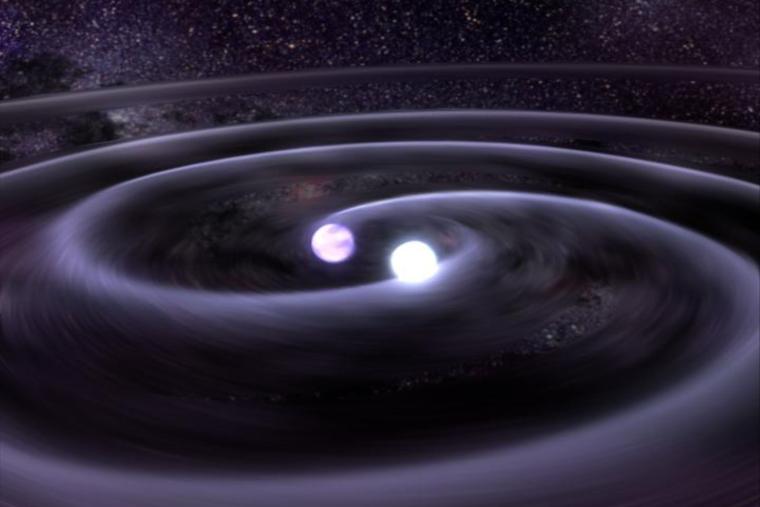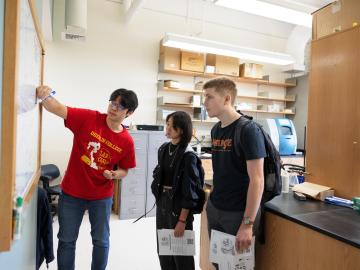Professors Break Down Importance of Gravitational Wave Detection
February 15, 2016
Kasey Cheydleur

For the first time, scientists have directly detected gravitational waves, confirming a phenomenon first theorized by Albert Einstein’s theory of relativity 100 years ago. In September 2015, researchers affiliated with the Laser Interferometer Gravitational-Wave Observatory (LIGO) observed the ripples in spacetime created by the collision of two massive black holes 1.3 billion years ago, offering an unprecedented perspective on the cosmos.
Two professors in Oberlin’s Physics and Astronomy Department, Robert Owen and Dan Stinebring, are particularly enthusiastic about the discovery, having closely followed the project in connection to their own research into gravitational wave astrophysics. Owen describes his research as the “theory side” of the gravitational wave detection effort. The sizes of the two black holes that collided, 29 and 36 times the mass of the Sun respectively, were calculated through computer simulations using code Owen helped to develop. “I don't want to pretend that my input was particularly important to the discovery—the discovery was the work of an enormous collaboration,” he says. “But the fact that my work has played some small role in this epochal discovery has profoundly reinvigorated my passion for science.”
While he believes those claiming the discovery is a “Galileo moment” are being a bit hyperbolic, he still considers it one of the top five most important scientific discoveries in the last 100 years. Owen explains this discovery is the “first-ever measurement of spacetime behaving in its full, non-Newtonian glory” and opens up entirely new possibilities in the field of astronomy.
“All of the astronomical observations we've ever done have been through the collection of electromagnetic waves. Historically, every time we've opened up a new band of the electromagnetic spectrum for observation, we've discovered profound and unexpected new things. Radio telescopes gave us quasars and neutron stars. X-ray telescopes showed us that black holes are not just mathematical abstractions, that they actually exist. This discovery didn't just open up a new band of the electromagnetic spectrum, it opened up an entirely new spectrum! What excites us most in this community right now is the possibility, in fact, the likelihood, that we'll detect phenomena that are completely unexpected, phenomena that were completely invisible from the dawn of humankind until September of 2015.”
Dan Stinebring shares his colleague’s excitement about the announcement and its connection to his own research. “This is a huge boost to our own pulsar-based research effort. I am part of the NANOGrav collaboration. We, and two other groups around the world, are trying to detect gravitational waves from orbiting black holes. But, unlike the massive black holes LIGO detected, our technique is sensitive to pairs of black holes a billion times the mass of the Sun orbiting each other in the centers of distant galaxies. We use weekly observations of an array of about 40 pulsars to see the very faint—and much slower—ripples from these supermassive black hole binaries. We have been doing this work for about 10 years and are getting close to a payoff moment ourselves,” he says.
“I have been at Oberlin 26 years, and it’s never been more fun than now,” Stinebring says. “I feel fortunate to be at a place where we have two gravitational wave search efforts going on. It’s a great opportunity for students, and we’re having a blast, too!”
See more at space.com.
Tags:
You may also like…
Friday Afternoon with Lab Crawl
October 30, 2023
This year’s Lab Crawl drew what may be the largest crowd in the event’s illustrious history, with some 500 students and dozens of faculty taking part. Missed out on the excitement? It looked something like this.
Lab Crawl: It’s Not Just for Scientists
October 24, 2023
Oct. 27 open house highlights research across the sciences—and just about everywhere else.
In the Path of Disaster
August 28, 2023
Monica Dix travels to a hub of natural calamity to probe its risks and resilience.


